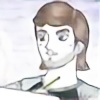HOME | DD
 BananaScholar — Injury-prone
by-nc
BananaScholar — Injury-prone
by-nc

#deformity #insect #nestlings #oc #character #injury #insectgirl #insectoid #monstergirl #original #originalcharacter #originalspecies #scars #sidecut #worldbuilding #waifumaterial
Published: 2024-03-23 17:02:51 +0000 UTC; Views: 2350; Favourites: 29; Downloads: 1
Redirect to original
Description
Back in the very first post about nestlings, I offhandedly made this statement:
"Nestlings can regenerate lost body parts during molts. As they grow older, however, this ability gradually diminishes, with regeneration taking more time and regrown body parts sometimes forming incorrectly (limbs with fewer numbers of digits are especially common). As adults, nestlings lose this ability entirely"
And now, I finally decided to illustrate how such "incorrectly regrown" body parts may look like.
My first thought was to simply depict it in my usual "textbook" manner – but then I decided that it would be way more interesting to draw a full-fledged character and showcase stuff on them, rather than on a generic anatomical diagram!
So here they are.
They don’t really have a name, but I like to call them "Girl that likes to play with fireworks".
To clarify, the only incorrectly regrown limb is the right one, specifically the right upper forearm. As you can see, it has only two fingers and underdeveloped thumb, the hand is slightly deformed, there are only two spikes instead of usual three and the forearm itself (thought it may not be very apparent due to perspective) is about one quarter shorter than it’s supposed to be. More extreme cases are possible, but rare. In general, the effects of abnormal regeneration are similar to those of phocomelia seen in humans.
Other injuries you can see were acquired after molting is finished and have nothing to do with abnormal regeneration, but they do provide clearer look at how nestling scars look like. Their carapace is relatively hard, so instead of slashed and scratches, it would usually form cracks, leaving very characteristic fissure-like marks after the wound is healed. Some pictures already showcased individuals with such marks, but this one provides more detailed depiction.
The dot-like scars on the shoulder are actually from an external fixator applied in the past to treat humerus fracture. Yep, nestlings do actually have knowledge of this kind of surgery! Or at least they do in some nests.
Damaged eyes and wing, I think, do not require any particular elaboration.
Related content
Comments: 19

👍: 1 ⏩: 1

👍: 1 ⏩: 0

👍: 1 ⏩: 1

👍: 1 ⏩: 1

👍: 1 ⏩: 0

👍: 1 ⏩: 1

👍: 1 ⏩: 1

👍: 1 ⏩: 1

👍: 1 ⏩: 1

👍: 1 ⏩: 1

👍: 1 ⏩: 0

👍: 0 ⏩: 1

👍: 1 ⏩: 1

👍: 1 ⏩: 0

👍: 1 ⏩: 1

👍: 0 ⏩: 0

👍: 1 ⏩: 1

👍: 1 ⏩: 1

👍: 1 ⏩: 0

















